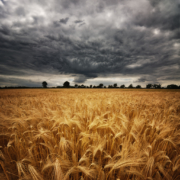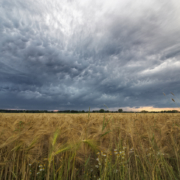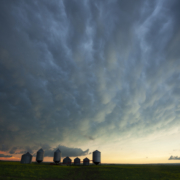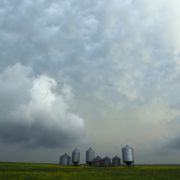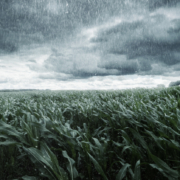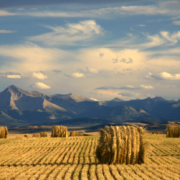CCHA insured more than $6.7 billion in 2020
Prairie farmers continue to insure their crops for hail damage at near record levels. 2020 was a below the 5-year average for claims but endured higher than average claim payments. Overall, the industry will record a near breakeven type of year. Claims produced insurance payouts of over $192 million on over 12,100 claims in Western Canada. Producer premiums totaled just over $300 million for an industry loss ratio of 64 percent.
Timely rains and good seeding conditions gave producers some early hope after a poor fall harvest. For some areas, the weather dried out quickly. Reserve moisture helped many producers across the prairies. Some crops did suffer from insufficient moisture and excess heat. Indications are that crops range from excellent to average for the most part. With industry premiums decreasing an average of 15% over the past 5 years, producers welcome one of the few declining agricultural input costs.
Some parts of the prairies received less than average storm days throughout the summer, but storm severity made up for the decrease. July storms caused havoc across Alberta and Saskatchewan. But a single-day late August event in Saskatchewan was costly to ripe crops. Manitoba was spared after 2 years of higher-than-average losses. Activity was widespread around the prairies.
Hardest hit was Alberta with an industry loss ratio of 83% similar to 2019. Saskatchewan followed with a 65% loss ratio, down from 95% a year earlier. Manitoba saw limited hail activity posting a 29% loss ratio after suffering a 93% loss ratio in 2019.
After a year of contrasts and challenges producers welcomed the ideal seeding conditions. 2019 poor harvest conditions provided much needed sub soil moisture to help get the 2020 seeding year off to a great start. Summers timely rains for many provided what looked to be above average crop conditions. A warm dry fall provided many straight days of harvest allowing producers to reap the benefits of the growing season.
The summer was mostly average for the number of storm days. The storm season was spread mostly through June to August. September was spared allowing producers to finish up harvest. Claim frequency (Claim to Policy) was down 4% from the 5-year average. Storm severity (Average per Claim) was up 10% from the average.
Alberta hail claims result in second straight year of negative results
Alberta’s storm activity resulted in similar activity to 2019 for the industry. An early severe storm that pummeled the city of Calgary also caused crop damage, however, early crop recovery helped lessen industry losses. Claim activity was up over 26% compared to the 5-year average, while claim severity at more than $20,000 per claim was higher by more than 20% compared to the average. Total hail payments for 2020 were reported at just over $69 million. The overall reported loss ratio was 83%. Total sums insured increased for 2020, with rates appearing to stabilize.
Saskatchewan reported average loss year
Saskatchewan saw a decrease in storm activity compared to 2019. A late August storm dampened what was looking to be a light hail season for industry insurers. The late storm on harvest ready crops was the most expensive of the year. Claim activity was down 1% compared to the 5-year average, while claim severity at $13,000 per claim was a decrease of about 15% compared to average. Total hail payments for 2020 were reported at just over $163 million. The overall reported loss ratio was 65%. Total sums insured increased for 2020, with average rates continuing to soften.
Manitoba records light hail activity for 2020
Manitoba recorded a decrease in storm activity compared to 2019. Little storm activity resulted in positive results for the province. Claim activity was down 59% compared to the 5-year average, while claim severity at $9,900 per claim was down 22% compared to the average. Total hail payments for 2020 were reported at over $15 million. The overall reported loss ratio was 29%. Total sums insured decreased slightly for 2020, with average rates decreasing slightly as well.
Who we are: The Canadian Crop Hail Association (CCHA) has been serving the crop insurance industry since 1915. It is a member-driven organization that represents the interests of the Canadian Crop Hail managing general agencies and insurance companies. These private and government organizations together provide a risk management tool to the farmers across Canada. Members are Additional Municipal Hail Ltd. (Saskatchewan), AG Direct Hail Insurance Ltd, Agriculture Financial Services Corporation (Alberta), Canadian Hail Agencies Inc, Co-operative Hail Insurance Company, Manitoba Agricultural Services Corporation Rain and Hail Insurance Service Ltd., New Brunswick Agricultural Insurance Commission and Palliser Insurance Company Ltd.


